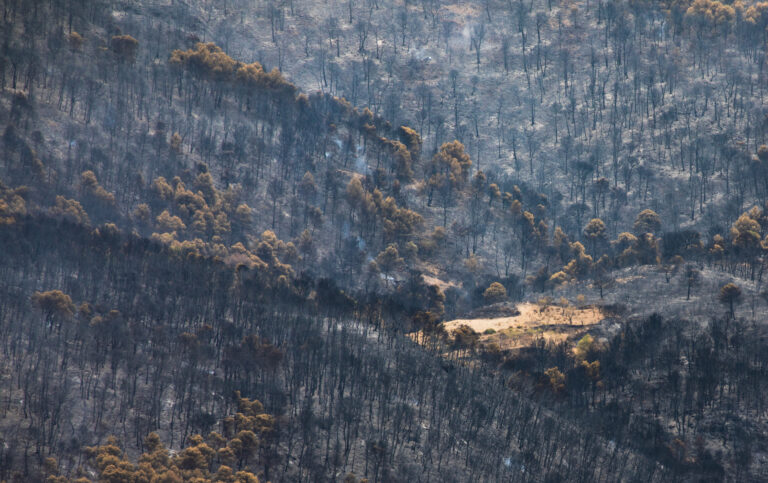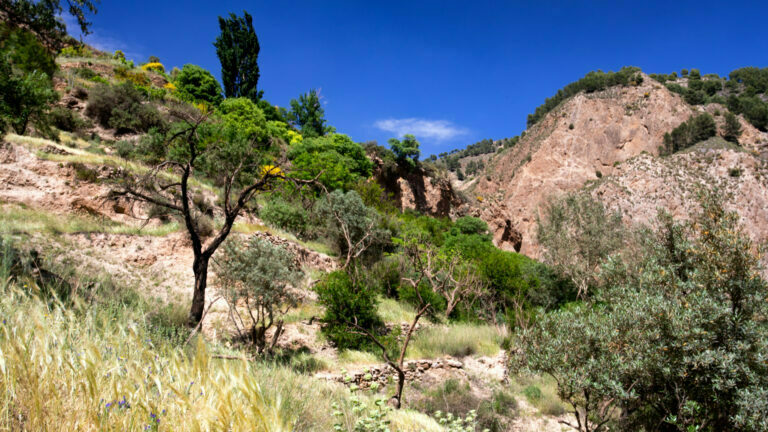Photographing the Gorafe Desert
A Trip to the Badlands
On Tuesday I went on a 12k ramble in the badlands of the Gorafe Desert, North East of Granada. The desert was, for a brief period of 5 million years, a lake with no outlet to the sea. Sediments, washed down by the mountain streams, were deposited in the basin in horizontal sheets. 500,000 years ago the basin drained to the west and new streams carved out the canyons, ravines and badlands that characterise the area, the most southerly desert in Europe, today.
You can find out more about the Gorafe-Guadix area here.
I’ve been meaning to visit this place for several years now, it’s a long drive from home and what with one thing and another, it’s never happened until yesterday.
We drove up from the village of Gorafe, a narrow concrete road to the top of the canyon. This road has been described as 4×4 only but it is not a dirt track, there are passing points and it’s an easy enough drive.

The Badlands have been used as a location for countless Westerns, but the name Gorafe comes from the Arabic word ‘Gaurab’ which means ‘Upper Chambers’, referring to the caves built 150 metres up a cliff known as the Caves of Almohad’. The caves are interlinked and multi-storied to make defence easy. This style of cave-dwelling is known as Los Algarves and is still used today in the area around Guadix and Gorafe.

We parked at the top, a little distance away from the canyon and walked through almond fields for a kilometre or so before turning a corner and beginning the descent into the depths of the canyons.

Once in the bowels of the canyons, the sense of scale disappears and it would be incredibly easy to get lost, there are thousands of these canyons, carved out by rivers and streams and although the streams are now dry, they make for spectacular and very atmospheric hikes.
We walked for several kilometres up one canyon and reached an insurmountable rock face at the end, where the original spring emerged half way down.
Fortunately we were able to find a goat path that led almost vertically up the canyon side, not recommended with a bag of expensive camera gear, but rather that than retrace our steps.
Photography
I took my usual kit, the Canon 5D S with 16-35mmm lens, 24-70mm lens and 70-200mm and for once, used them all! The light was poor, we got there around 11:30am with a lot of clouds in the sky so the light was a little flat and I had to work these pictures hard to extract as much colour as I did.
The magnificence of the location suggests a dawn visit is required, at this time of year the sun remains low in the sky making some interesting shadows, but stays on the shooters side of the basin all day. In the summer, with the sun directly overhead the shadows would disappear and make for very boring shots, so winter and golden hours make much better sense.
I drank a full litre of water while on the site and was very thirsty indeed by the time I got back to the car. If you do this walk take plenty of water, more than a litre. Yesterday was never hot, in the summer you’ll find out quickly why they call these canyons “badlands”.
Conclusion
Probably now my Number 1 location in Spain for a single day visit. You could spend a year there, but once you are down in the canyon floor the scenery is not as remarkable. Worth doing for the thrill of it all, but it’s the bigger landscapes that astonish.
Check out some of my other expeditions in Spain, here are a couple of links.
Photographing the Picos de Europa (Part One)
Subscribe…
I’ll keep you in the loop with regular monthly updates on Workshops, Courses, Guides & Reviews.
Sign up here and get special prices on all courses and photowalks in 2024







